Episode #1: How MoEngage changed their B2B content strategy during the pandemic
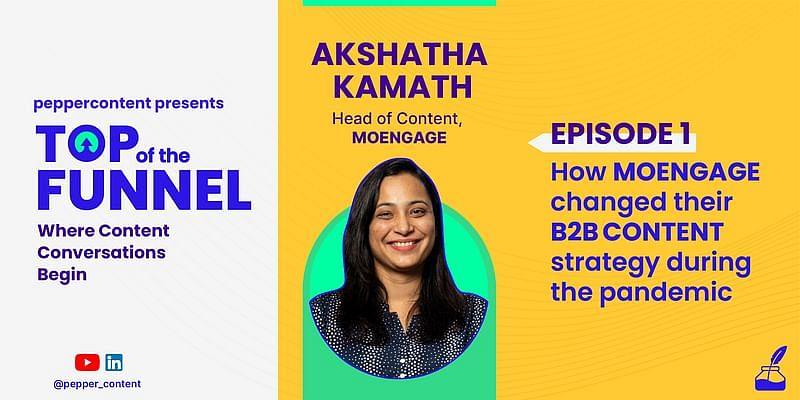
This week at Pepper Content’s show “Top of the Funnel”, Natasha Puri (Content Marketing Lead, Pepper Content) is in a conversation with Akshatha Kamath, Head of Content at MoEngage. The episode is relevant in the current scenario where the pandemic has taken a toll on the usual marketing strategies and all of us are trying to gear up on new ways to keep the customers engaged.
MoEngage is a customer engagement platform that caters to companies like Flipkart, Gaana, and many others. Akshatha, a voracious reader is heading the Content marketing and handling a lot of challenges to stay in line with customer demands. Read on to know how interesting the content function is at MoEngage.

Content marketing function at MoEngage:
“Content is a huge chunk of the Marketing Function”, says Akshatha.
When not writing content, they are working very closely either as a consultant, or as an editor. For example, when there are a lot of events and webinars, creating content from scratch is not always the idea. They either repurpose something that’s already available or keep the regional or field teams to execute that. In this way, they become consultants by giving an overall guidance, telling people what can be spoken about, what are the high level data points etc. Other than this, they act as internal editors for other teams. For example, if a customer success team wants to generate a report for the client for their set of accounts, or they want to mention some benchmarks, the internal editing team consults with them in terms of how the design should be, what the language should be. Akshatha’s team is involved in creating any content that goes out of MoEngage and has a certain level of importance.
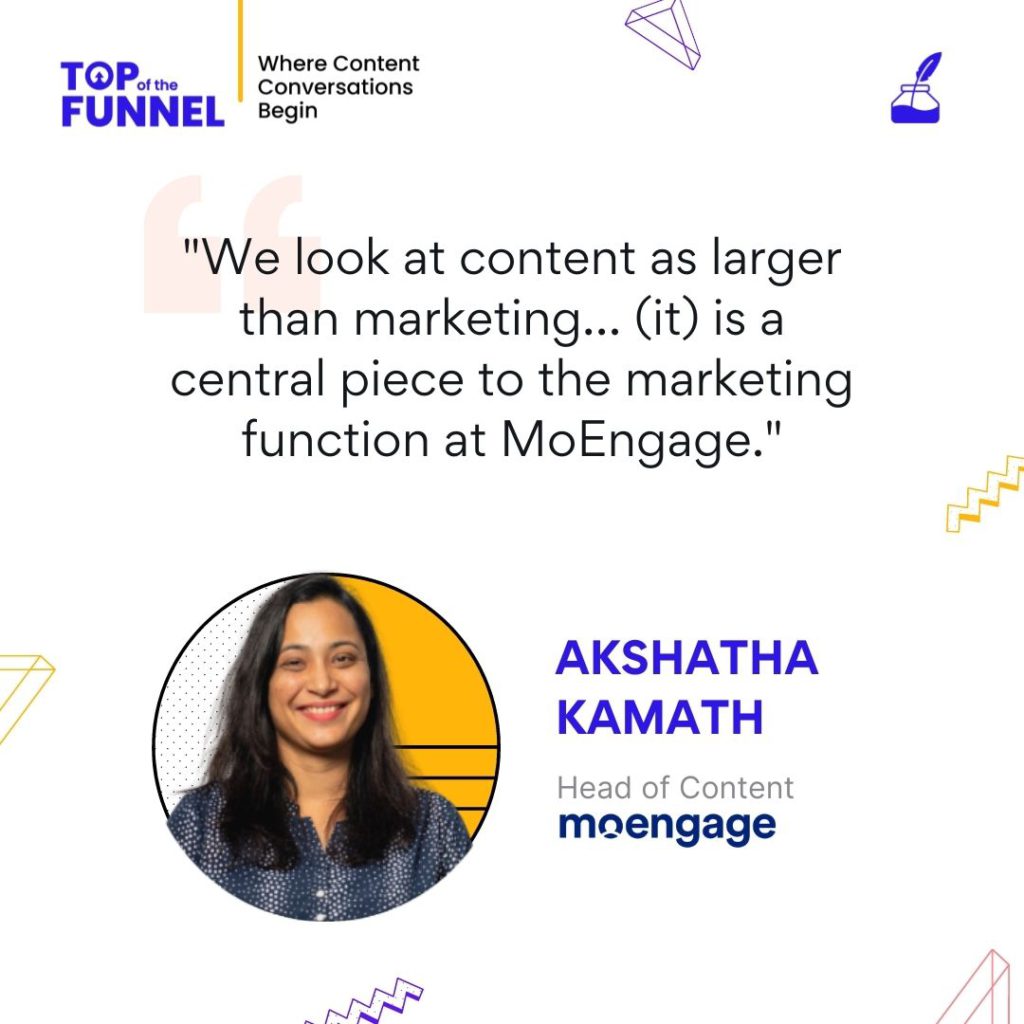
Good Content; central piece to the marketing puzzle
We look at content as larger than marketing, says Akshatha. Though it is a very important part of marketing, our content has seen good success in generating pipelines or in terms of building a brand and thought leadership etc. In that way, content is definitely a very central piece to the marketing function at MoEngage.
Other than marketing, content is also a part of customer advocacy, customer engagement, sales enablement. So content works across different functions and within marketing. With this, they are achieving goals that are contributing to the top of the funnel kind of engagement.
They are contributing to MQL and SQL, Nurtures and beyond. They also focus on other aspects like writing articles, publishing data reports, or white papers which sets them ahead.
A successful content campaign at MoEngage
Akshatha talks about one of the biggest, most exciting and innovative content campaign, which was a combination of two or three challenges that they faced.
In 2019, the content that they created was doing well in the Indian and the Southeast Asian market. The challenge was to break into the Western or the European market and produce content that resonates with that region?
They planned to engage with content partners and collaborate with a host of companies in those regions who were in a similar MarTech space. They would get data insights and could leverage it together to build some piece of content. Both brands would get visibility and there would be an exchange of data from both sides of the world because there are really good information sites on what’s happening on the mobile side or on the MarTech side in this part of the world. They partnered with Apptopia in 2020, and built two reports with them.
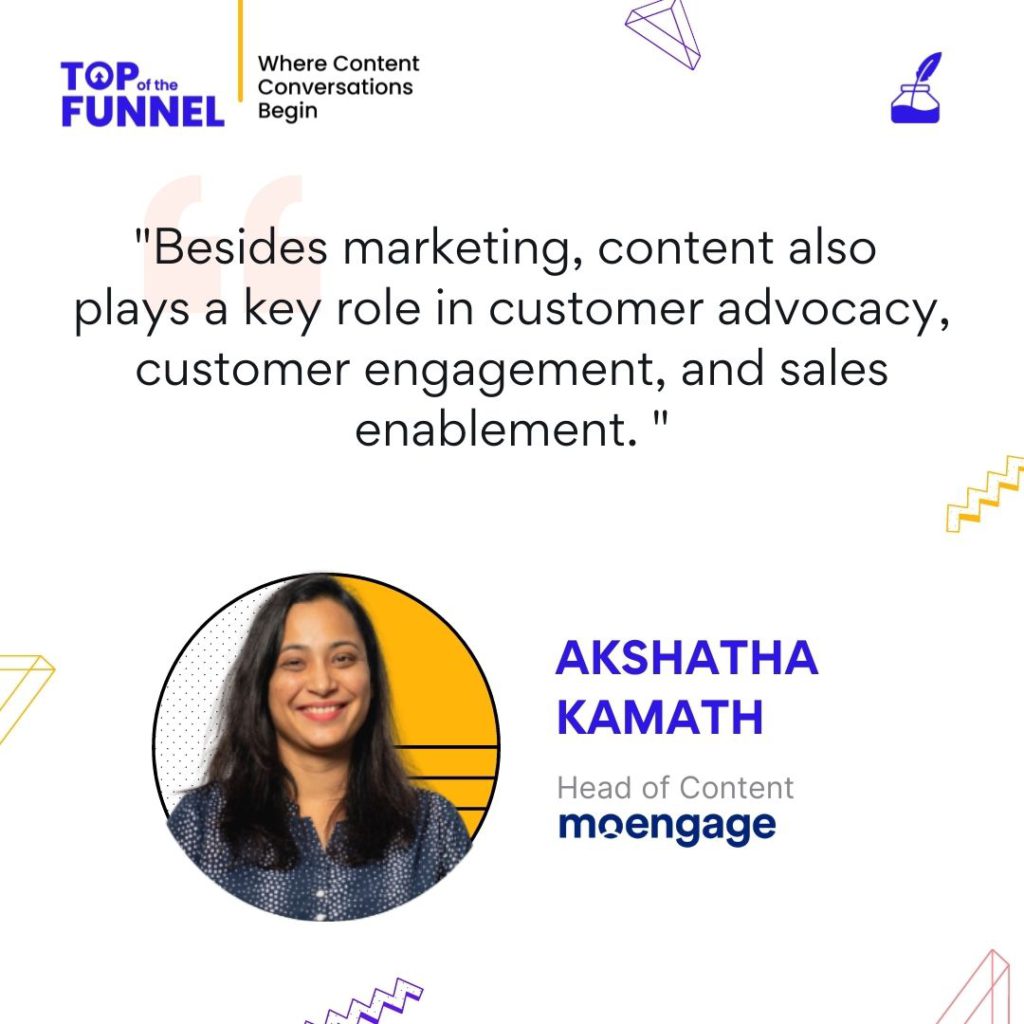
Change in B2B content strategy during the pandemic
Just when they had thought of going global, the pandemic struck and the whole plan had to change. This happened when the team was in the middle of creating global reports in collaboration with these MarTech companies. But they quickly realised that whatever they were building was not making sense at all because things had completely changed. So they quickly shifted gears.
Akshatha describes in detail how they shifted gears quickly to expand marketing beyond the content. Here are the key points:
- Creating COVID reports for businesses: We started in April when a many companies around the world did not know what was happening, what the trends were, what the industry was looking like and how their competition was sparing. Companies had questions like, were they the only ones who were doing well or not doing well?
Our team captured data from different parts of the world, for different regions, and that did well because it was timed well. The audience was really looking for some kind of insights from credible sources, and that is what we provided them.
- Produce information for the new age: We realized that the market is going to change again. It might slow down for a while. What people want to know is when should we open up, what do we do next? So, we followed that up with another e-book where we spoke about what to do when the markets open up? The book spoke about issues like, what do you do if you have been in a similar state as before, if your industry has been unimpacted or if your app or business has not been impacted? Or, if you’ve seen growth now, how do you handle this? And how do you make sure you’re still growing even when the markets open up?
This report was designed with the goal to get maximum downloads in terms of the reach that we wanted to get. We got 40-50% of our downloads from the US, European region, which was a success for us.
- On the field marketing: We completely transitioned to a series of video interviews or webinars that spoke about the same topic around COVID and what was happening and what different companies were seeing in their regions. We also spoke to our customers and got snippets from them.
We saw what campaigns were changing because travel companies like OYO had nothing to do because there was a lockdown around the world and there was nobody who was going to book rooms. So what do they do? So even companies like OYO did a lot of different things. They created games on their app, so their users could come in and play those games. They started sending out newsletters. So, there was a huge shift and we knew that we were at the center point and we could get all of this information, pass it on to people who were consuming our content. So we started creating a series of blogs where every week we would post updates saying, this is what’s happening.
The trick to keep the business going, according to Akshatha, was to relocate any marketing activity or content generation around growth marketing because this was not going to strike a chord with businesses at all. The whole game was about survival. So, people should keep all the strategies aside and make people believe that we will come back to this later when things are better.
Latest Blogs
Explore how Google’s 2025 AI search updates triggered ranking chaos. Learn actionable strategies to adapt your SEO for AI Overviews, zero-click searches, and SERP volatility. Stay ahead now.
Learn how to rank on AI search engines like ChatGPT, Perplexity, and Gemini by optimizing your content for authority, structure, and relevance. Stay ahead in AI-driven search with this strategic guide.
Explore the best healthcare SEO services for your medical practice. Improve online visibility and effectively reach more patients in need of your services.
Get your hands on the latest news!
Similar Posts
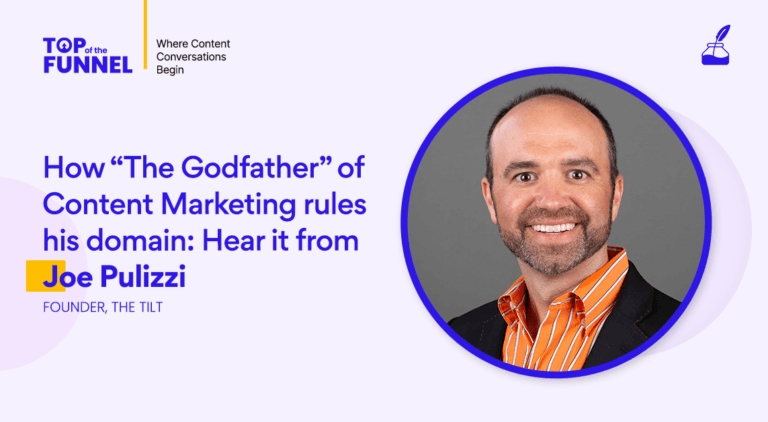
Expert Speak
18 mins read
Season 2 Episode #1 How “The Godfather” of Content Marketing Rules His Domain: Hear It From Joe Pulizzi
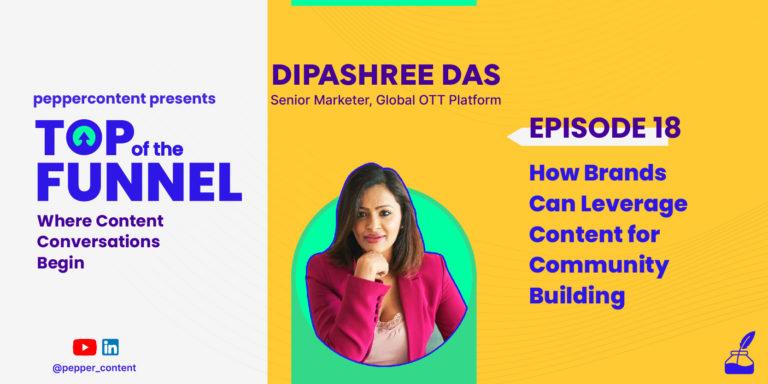
Expert Speak
16 mins read
Episode #18: How Brands Can Leverage Content for Community Building
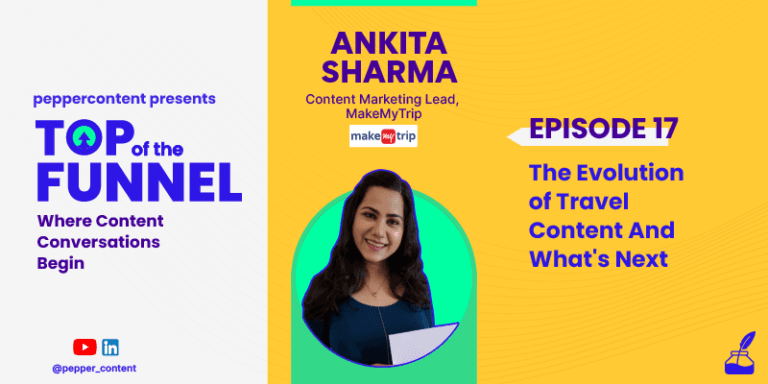
Expert Speak
11 mins read